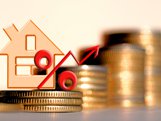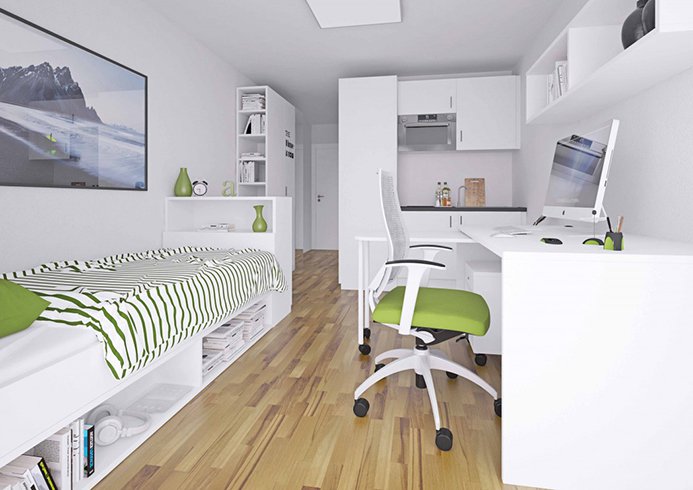3 reasons why the German real estate market is not threatened by a price collapse
 There is a general opinion: the German economy is one of the most stable in the world. Real estate prices in Germany have been growing steadily for eight years. However, experts increasingly say that the market is overheated and prices will soon begin to fall, citing the following arguments:
There is a general opinion: the German economy is one of the most stable in the world. Real estate prices in Germany have been growing steadily for eight years. However, experts increasingly say that the market is overheated and prices will soon begin to fall, citing the following arguments:
The time has come for a new crisis: global crises occur about once every 10 years, the beginning of the last recession was in 2008, and a new one can be expected in the near future.
Real estate is greatly overestimated, prices are critically ahead of rental dynamics: according to the German Federal Bank, in 2017, real estate in the cities of the G7 (Berlin, Hamburg, Düsseldorf, Cologne, Munich, Frankfurt and Stuttgart) was overvalued by 35%.
Bank rates will rise soon: The European Central Bank announced its intention to stop buying out assets under the quantitative easing program at the end of 2018. Experts expect loans to rise in price, and this will contribute to lower housing prices.
In my opinion, with this approach, the issues are not deeply affected, and this, in turn, leads us to the wrong conclusions about falling prices. I believe that growth will continue, but slow down, and I want to explain why.
Global crisis does not provoke price reductions
Even if the global economic crisis happens, there is reason to believe that it will not cause a collapse in prices. Over the past 50 years, the German real estate market has recorded three periods of recession: in 1972–1976 (when housing fell by 6% with inflation), in 1981–1989 (-15%) and in 1995–2008 (-20%) . If the first two were provoked by the world crises of 1973 and 1979 with a lag of 1-2 years, the third was associated with overproduction of housing on the domestic market – that is, after the 1990s there was an imbalance between the German and other European markets. When a bubble burst in Europe and the USA in 2007, it did not exist in Germany. Thus, the global situation has a limited impact on the German real estate market.
Real estate in Germany has become more expensive since 2009 at about the same pace as in the first half of the 1990s. However, the current growth period is different from the previous one.
First, today, price increases are supported by a stable economy. In the early 1990s, Germany’s GDP changed unevenly: from +5.3% in 1990 to -1.0% in 1993 and again +2.5% in 1994. Over the past 5 years, the economy has grown steadily and accelerated: from 0.6% in 2013 to 2.5% in 2017. The labor market behaved accordingly: in the first half of the 1990s, unemployment increased (from 5.5% to 8.2%), and from 2013 to 2017 it decreased (from 5.2% to 3.6%).
Secondly, housing is not enough. In the early 1990s and the last five years, the population of Germany is growing at about the same speed (about 450 thousand people per year), but the number of building permits issued annually, according to various sources, has decreased by a factor of two and a half. According to Thomas Bauer, head of the Federation of the German Construction Industry (Hauptverband der Deutschen Bauindustrie), 400,000 housing units need to be built annually in Germany to satisfy demand, in 2017 350,000 building permits were issued in Germany.
Third, the immigration structure has changed. If in the 1990s mainly refugees, labor immigrants and repatriates moved to Germany, then since 2010 there were more specialists and scientists among the visitors. Many of them move within the framework of the blue card program, which the EU issues to professionals with a good education: according to Eurostat, Germany accounts for 85% of such permits.
Especially changed the demographic situation in Berlin. In this city, the population is growing by 50 thousand people a year, with a total of 3.5 million. The main influx is young and middle-aged people with education, skilled workers. People come with money, they want to rent good housing and buy it. Thus, they contribute to higher housing prices and exert 2-3 times more pressure on prices than the average Berliner.
The difference between the growth rate of the cost of buying and renting is exaggerated
An important nuance that must be taken into account when comparing the dynamics of growth in prices and rental rates is overregulation of the German market. According to the rules, in Germany for three years the owner can increase the rent by no more than 20% (in Berlin – by 15%), and in most regions when concluding a new contract the homeowner can increase the rent to a value not exceeding the official rental index by more than 10%. Because of these restrictions, in large cities, rent cannot grow as fast as the purchase price, which is formed by the mechanisms of supply and demand. Therefore, the data calculated on the basis of old lease agreements do not reflect the real demand and the willingness of the population to pay more. According to the information of the mortgage broker LBS, in Hamburg 70% of residents rent apartments, in Berlin – 80%. According to statistics from the portal Immobilienscout24.de, in Munich, one apartment has an average of 77 potential tenants, in Stuttgart – 75.

